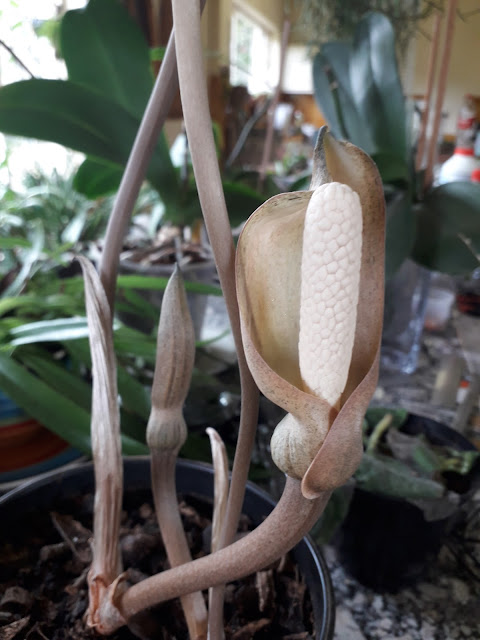This blog is to bring to you the rich and varied natural wonders and local human traditions that can be found in and around the eMalangeni Peat Swamp forest immediately south of lake Amanzimnyama at Kosi Bay.
The Gorgeous Bush-shrike Telophorus quadricolor is another of the forest birds that are more often heard than seen but if one has some patience these birds will appear as if by magic out of the undergrowth.
The eMalangeni coastal peat swamp forest with a total area of 880 ha occurs adjacent to the Siyadla / aManzimnyama river, immediately south of lake aManzimnyama is the largest peat swamp forest in South Africa, it is also the main source of fresh water for the Kosi Bay Lake System. Coastal peat swamp forests are fresh water forested wetlands that are established on peat soils in close proximity to the Indian Ocean on the north east coast of South Africa. In South Africa Coastal peat swamps forests are highly threatened ecosystems, being the second rarest forest type in the whole country and only occur in isolated patches from the Mozambique border to just south of the Msikaba River in the Eastern Cape. The coastal peat swamp forests on the flat coastal plain of Maputaland which include the eMalangeni coastal peat swamp forest represent seventy five percent of all the swamp forest found in South Africa.
As previously stated the eMalangeni peat swamp forest is an extensive swamp forest in the Kosi Bay system. Being the largest swamp forests in the country and due to the rarity of this forest type, it adds considerable importance to the Kosi system. Common tree species include the giant raffia palm Raphia australis, Syzygium cordatum, Ficus trichopoda, Englerophytum natalense, Voacanga thouarsii and Rauvolfia caffra as large trees, with Rapanea melanophleos, Myrica serrata and Halleria lucida as sub-canopy. On the forest margins one can find Sphedamnocarpus pruriens.
Ferns and other plants such as the reed like liana Flagellaria guineensis. The extensive groves of raffia palms in the forest support the largest population of breeding Palm-nut Vultures Gypohierax angolensis in South Africa. The ferns, Microsorum scolopendria, Stenochlaena tenuifolia and Nephrolepis biserrata as well as Zamioculcas zamiifolia,
Sansevieria concinna, Scadoxus multiflorus, Coleotrype natalensis, Drimiopsis maculata, Smilax anceps and many other plants cover the forest floor. The trees are covered in epiphytes such as the fern Microsorum punctatum and orchids such as Cyrtorchis arcuata, Aerangis mystacidii and Polystachya concreta, commonly known as the Yellow Helmet Orchid
Kosi Bay in South Africa is a complex estuary-linked lake system that stretches from the Mozambique border in the north, to Lake Amanzimnyama, in the south, that has been transformed into circular bays and lagoons containing fresh or brackish water, separated from one another by low beach barriers.
The system comprises four roughly circular, interconnected lakes being Makhawulani, Mpungwini, Nhlange and aManzimnyama, a broad channel leading to an estuary that opens to the Indian Ocean, and three extensive areas of swamp. Two principal rivers, Siyadla and Nswamanzi, feed into it. This is also the only system in South Africa in which five species of mangrove are found.
The climate is subtropical, with maximum temperatures varying between 23
°C and 30 °C. Rainfall averages between 670 and 1,100 mm p.a. and falls mostly
in October–March.
Birds
The bird life of the Kosi system is essentially forest associated and is prolific, the list of 247 species for approximately 85 are water or estuary associated. Amongst the wetland and water associated species some are rare, such as the white winged Flufftail and the Whitebacked Night Heron, Gorsachius leuconotus.
The largest colony of Palm-nut Vultures
Gypohierax angolensis in South Africa is to be found in this forest. Several
bird species at Kosi area the most southerly limits of their distribution and
are not encountered elsewhere in South Africa such as the Livingstone’s Turaco,
Tauraco livingstonii.
Orchids
There is a fairly large number of orchid species both epiphytes such as Aerangis mystacidii and Cyrtorchis arcuata as well as terrestrial orchids such as Oeceoclades lonchophylla are to be found in the eMalangeni forest. There a number of tropical African orchid species found in this forest marks the South limit of their occurrence.
Animals
Hippo, crocodiles, monkeys, bush pig, bush buck and many others are be encountered in the forest.
Guided excursions that offer far more scientific knowledge and interesting facts in regards to the plants birds animals and other creatures encountered in the forest than the usual guided can be conducted in English, Zulu and German into the eMalangeni Swamp Forest and surrounding area including the nearby Tembe Elephant Park can be arranged and tailored to the individual needs of the client/s no matter at which establishment one will be staying at while at Kosi Bay. Please visit one of my websites for contact details.
Michael Hickman
28.03.21
please visit my websites
as well as my other blogs at
http://luthulienvironment.blogspot.com/
http://ecomandurban.blogspot.com/






















